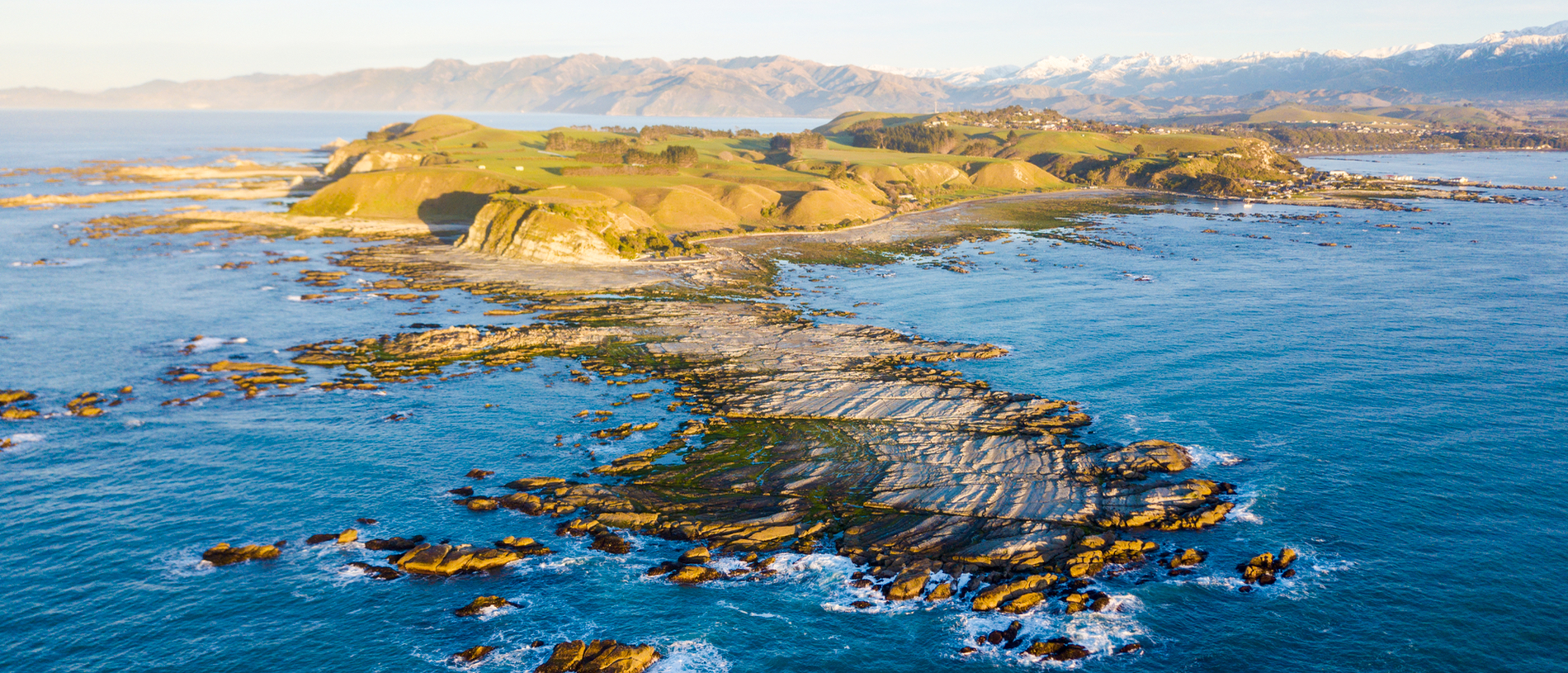
Coastal Kaikōura: magnificent marine life
Dozens of whale species are represented in these waters: most about as close to whale-watching tourists as they can get without actually hitting the beach.
The Hikurangi Marine Reserve sits near the township of Kaikōura on the South Island’s east coast, at the point where the undersea Kaikōura canyon approaches close to the land.
Visiting the reserve is an unparalleled opportunity to see whale, dolphin and seabird species, often in large numbers.
The Kaikōura canyon is 1000m deep and is a food basket for many of the whale, dolphin and seabird species found in New Zealand’s waters. The canyon is a side branch of the Hikurangi Trench, an underwater trough thousands of kilometres long extending northwards up the east coast of New Zealand and beyond.

Several small rivers and streams meet the ocean at or near Hikurangi Marine Reserve, bringing nutrients from the mountains to the sea. At the same time, the Southland Current brings cold water from the Southern Ocean and the East Cape Current brings warm water from the subtropics. These water masses converge off Kaikōura, creating a nutrient-rich, highly productive environment which can support many marine mammals and seabirds.
A variety of marine mammals may be seen year-round at Kaikōura, though the region is best known for its sperm whales, dusky dolphins and New Zealand fur seals.

The Kaikōura Canyon is the only place around New Zealand’s mainland where the majestic sperm whale can be regularly found so close to shore.
Orca are regular visitors and humpback whales pass through on their northern winter migration. Large pods of dusky dolphins live nearby, and small groups of Hector’s dolphins are also found closer to shore.
New Zealand fur seals are widespread, with significant colonies at Ohua Point north of Kaikōura and on the peninsula. Many species of albatross, petrel, shearwater and prion gather at Kaikōura; it is the only place in the world where Hutton’s shearwaters breed.
Paua, kina and rock lobster are the most well-known macro-invertebrates inhabiting the reefs; however, numerous other mobile species are also present including starfish, molluscs and crustaceans. A common array of fish species inhabit coastal areas, including butterfish, blue cod, tarakihi, marblefish, blue and red moki, sea perch, and several species of wrasse and triplefin.
While seafloor communities over the continental shelf are not well understood, more is known about the biota inhabiting the floor of the Kaikōura canyon, where dense populations of large burrowing sea cucumbers, spoon worms, polychaete worms and urchins occur at depths of 900–1100 metres.
Species such as hapuku, tarakihi, ling, hoki, lantern fish, and various sharks, rays, skates and squid inhabit the deeper waters. Benthic feeding fishes (notably rattails) are especially abundant in the depths of the Kaikōura canyon.